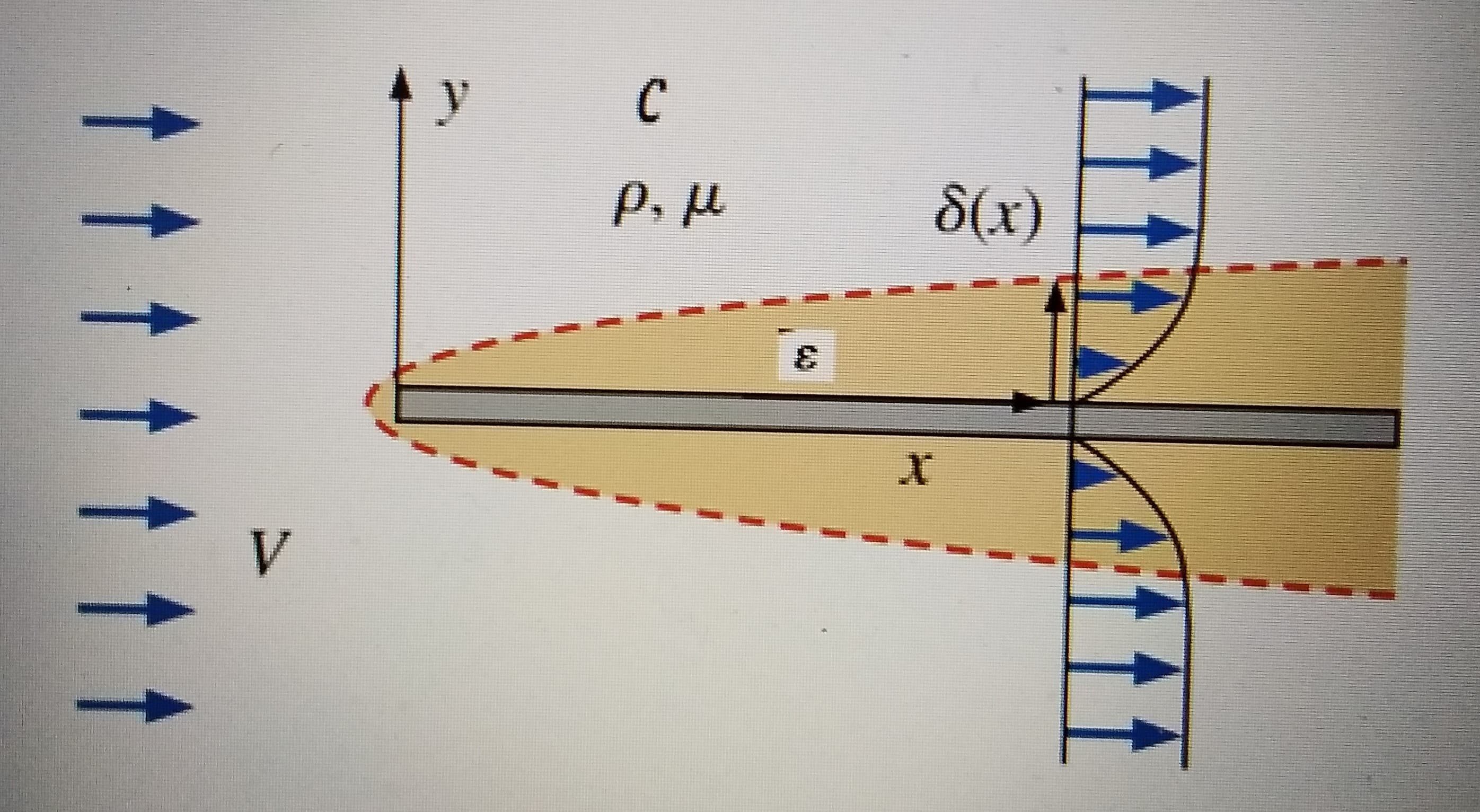A boundary layer is a thin region (usually along a wall)in which viscous forces are significant and within which the flow is rotational. Consider a boundary layer growing along a thin flat plate. The flow is steady. The boundary layer thickness d (m) at any downstream distance x is a function of x (m), free-stream velocity V(m/s)`, fluid properties fluid density r (kg/m3), fluid viscosity µ (kg/m.s), sound velocity c (m/s) and surface roughness ɛ (m). i-Use the method of repeating variables to generate a dimensionless relationship between boundary layer thickness d (m) and other parameters. Show all your work in detail. ii-calculate the boundary layer thickness d (m) value for x=16,2 m, free-stream velocity V=262 (m/s), fluid properties fluid density r=1.162 (kg/m3), fluid viscosity µ=1.862 x10-5 (kg/m.s), sound velocity c=345 (m/s) and surface roughness ɛ=0.015m (m). What should the velocity of wind tunnel test the similar in wind tunnel at the same temperature and pressure for 1/10 scale flat plate model to provide same Re and Ma. What do you think about your finding, explain, comment?
A boundary layer is a thin region (usually along a wall)in which viscous forces are significant and within which the flow is rotational. Consider a boundary layer growing along a thin flat plate. The flow is steady. The boundary layer thickness d (m) at any downstream distance x is a function of x (m), free-stream velocity V(m/s)`, fluid properties fluid density r (kg/m3), fluid viscosity µ (kg/m.s), sound velocity c (m/s) and surface roughness ɛ (m).
i-Use the method of repeating variables to generate a dimensionless relationship between boundary layer thickness d (m) and other parameters. Show all your work in detail.
ii-calculate the boundary layer thickness d (m) value for x=16,2 m, free-stream velocity V=262 (m/s), fluid properties fluid density r=1.162 (kg/m3), fluid viscosity µ=1.862 x10-5 (kg/m.s), sound velocity c=345 (m/s) and surface roughness ɛ=0.015m (m). What should the velocity of wind tunnel test the similar in wind tunnel at the same temperature and pressure for 1/10 scale flat plate model to provide same Re and Ma.
What do you think about your finding, explain, comment?

Trending now
This is a popular solution!
Step by step
Solved in 4 steps with 19 images









